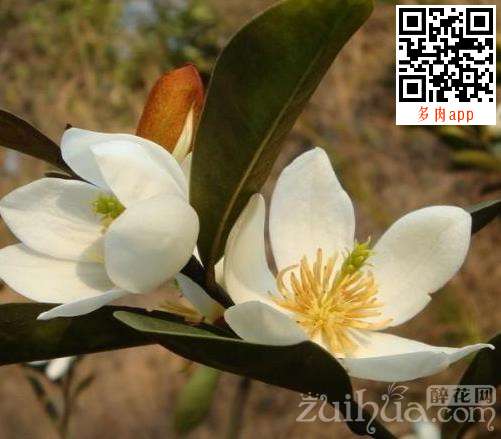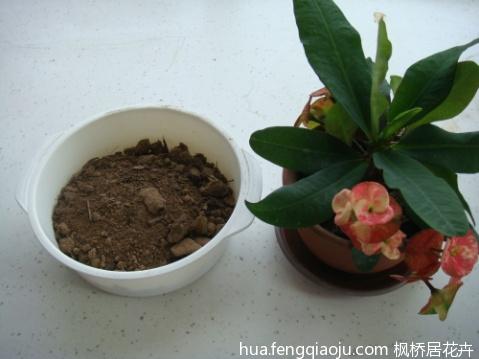How to adjust the acidity and alkalinity of flower culture soil?
The pH of the soil planted with flowers has a great influence on the growth of flowers. Improper pH will seriously hinder the growth and development of flowers, affect the absorption of nutrients, cause the occurrence of some diseases and so on.
Most flowers grow well in neutral and acidic (pH5.5~7.0) soil. Above or below this limit, some nutrient elements are in a state of non-absorption, resulting in nutritional deficiency in some flowers. Especially the flowers in acidic soil, such as orchid, camellia, rhododendron, gardenia, Michelia, sweet-scented osmanthus, magnolia, magnolia, etc., are suitable to grow in the soil of pH5.0~6.0, otherwise iron deficiency chlorosis is easy to occur.
There are many ways to change the pH of the soil:
If the acidity of ① is too high, some lime powder or plant ash can be added to the basin soil.
② can reduce alkalinity by adding appropriate amount of sulfur, aluminum sulfate, ferrous sulfate, humus fertilizer and so on. In order to meet the needs of flowers in acidophilic soil, potted flowers can be irrigated with aluminum sulfate (alum) solution at 1:50 or ferrous sulfate solution at 200. The effect of applying thioiodine powder is slow, but long-lasting; the application of aluminum sulfate needs to be supplemented with phosphate fertilizer; the application of ferrous sulfate is quick, but the action time is short, so it needs to be applied every 7 to 10 days.
③ can increase the mixed ratio of rotten leaf soil or peat to a small amount of cultured soil.
How to adjust the acidity and alkalinity of cultivated flower soil under the slightly acidic to neutral conditions of pH6--7, the nutrient availability is the highest, which is most beneficial to plant growth. In strongly alkaline soil (pH8.5), iron, boron, copper, manganese and zinc are deficient. In this kind of soil like acid flowers, such as camellia, rhododendron, gardenia, etc., will be due to iron deficiency and leaf yellowing, poor growth. In acid soil (pHs.0~6.5), it is easy to cause the lack of phosphorus, potassium, calcium and magnesium. Rainy areas also lack trace elements such as boron, zinc and aluminum, which is extremely disadvantageous to the growth of hostile plants. Soil pH also often affects the activity of soil microorganisms and the role of humus, thus affecting the availability of nutrients and the normal growth of flowers. Adjustment of soil acidity and alkalinity: the ability to adapt to soil acidity and alkalinity varies with the origin of all kinds of flowers. If the local soil is not suitable for "guest flower" growth, you can refer to the following methods. ① reduces soil acidity: quicklime can be applied, and the application rate is 25-50 kg per mu depending on soil acidity. ② reduces soil alkalinity: sulphur powder is applied according to the number of kilograms of sulfur powder applied per lOO square meter. 1.5kg is needed if the pH value is to be reduced from 8.0 to 8.5kg. Aluminum sulfate (alum): if you need to reduce the pH value from 7 to 6, 0.5kg aluminum sulfate can be applied per IOO square meter. Watering alum fertilizer water: for flowers that are harmful to acidic soil, the effect of watering alum fertilizer water is better than that of alum fertilizer water, generally using ferrous sulfate 2kg, oil meal or soybean cake 6kg, human feces and urine 10~l5 kg, water 200kg 250kg, put them in a large tank and bask in the sun for 20 days, dilute them with water after ripening. Application of humic fertilizer: there is more humic acid in rotten fertilizer, which can adjust the acidity and alkalinity of soil to make it neutral. The method of soil proportion of flower culture introduces that most flowers grow in the soil in the place of origin, and the root system can extend freely; the soil layer of nature is relatively deep, and the contact surface between topsoil and air is large, which is of course suitable for plant growth. After they are planted in the pot, the root system is confined to the flowerpot, which greatly changes the original living environment; if you randomly dig the general soil to plant them, it is impossible to raise the flowers well, and you will die over a long time. In addition to the above reasons, most of the flowers and trees grow in the mountains in their place of origin, where the soil is quite different from that of cities, towns, and general farmland, and flowers and plants come from all sides of the earth. It is impossible to raise flowers well if they are treated in a uniform way.

For example, cactus and succulent plants like noodle sand and river sand; rhododendron, cinnamon, Michelia, magnolia, Chinese orchid like Jiangnan mountain mud; flowers with succulent roots like rotten leaf soil; chrysanthemum, dahlia and other flowers like loose and fertile sandy loam. In addition, flowers have more stringent requirements on the acidity and alkalinity of potted soil. Flowers and trees native to the south of the Yangtze River prefer acidic soil, while those from the north prefer neutral or slightly alkaline soil, such as peony, peony, carnation, incense leather and most 2012 grass flowers, which grow poorly in acidic soil, so they should be treated differently. Generally speaking, the potted flower culture soil should have a good aggregate structure (the soil is granular, and the water will not stick together for a long time), the drainage is good and has a certain water retention capacity, the basin surface does not accumulate water after watering, and the excess water can leak out quickly from the drainage hole at the basin bottom, and the soil surface is small and stiff when it dries. Pot soil should also have good aeration conditions, loose and fertile and contain a lot of humus (humus formed after weathering of plant residues); soil pH (pH value) is consistent with the pH requirements of planted flowers and trees; it does not contain harmful bacteria, insect eggs and weed seeds. In order to meet the special requirements of some flower techniques for potted soil, experienced flower lovers often cultivate potted flowers, such as pine needles, rotten time, peat, vermiculite, and so on. These substances are not soil, so a special term appears. The soil material used to cultivate potted flowers is called "cultivation substrate". The above is the introduction of the method of Zuihua net on the proportion of soil for flower culture. I hope you can get something after reading this article!
- Prev

Propagation method of primrose
Cutting propagation of primrose in early spring, cut the annual sturdy branches, or cut the semi-lignified branches of the same year from July to August as cuttings with a length of 8 cm, remove the leaves at 3 parts of the base, bundle them into a bundle of 20 branches, and soak them with rooting stimulants.
- Next

How to disinfect the soil of flower culture?
The common disinfection methods of household soil are cooking disinfection, formalin disinfection and carbon disulfide disinfection and so on. ① cooking disinfection method is to prepare the cultivation soil, put it in a proper container, and cook it in a pot with water. This method is limited to small-scale cultivation with a small amount of soil.
Related
- Fuxing push coffee new agricultural production and marketing class: lack of small-scale processing plants
- Jujube rice field leisure farm deep ploughing Yilan for five years to create a space for organic food and play
- Nongyu Farm-A trial of organic papaya for brave women with advanced technology
- Four points for attention in the prevention and control of diseases and insect pests of edible fungi
- How to add nutrient solution to Edible Fungi
- Is there any good way to control edible fungus mites?
- Open Inoculation Technology of Edible Fungi
- Is there any clever way to use fertilizer for edible fungus in winter?
- What agents are used to kill the pathogens of edible fungi in the mushroom shed?
- Rapid drying of Edible Fungi

